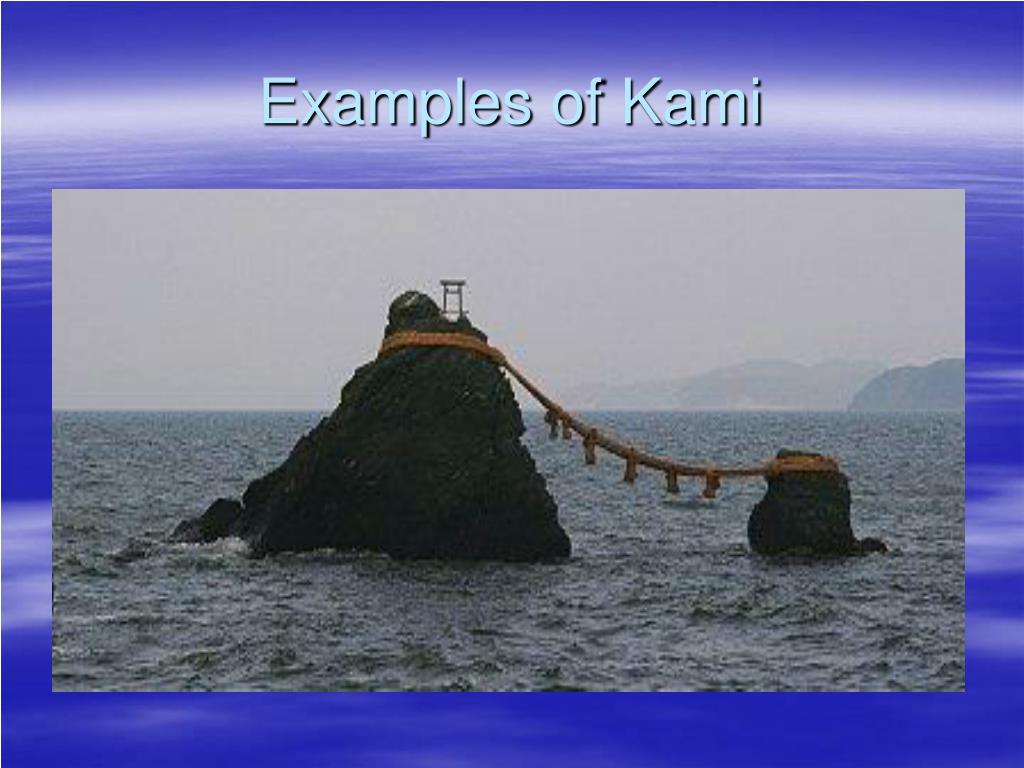
Moreover, Japanese people visit temples to receive healing powers. Later on, the gods evolved as modern diseases appeared. Lastly, the kami had a role of protection against disease, such as Hogami, deity of smallpox. This divine link explains why emperors are considered as demi-gods in Japan. It is also believed that the legendary emperor Jinmu is a descendant of Prince Ninigi. One of the best known myths of the Kojiki tells the story of Ninigi-no Mikoto, grandson of the sun goddess and the first kami to descend to earth to rule.

Japanese deities are also directly related to the imperial family. Thus people prayed to the kami to bless the land and to obtain fruitful harvests. In the past, the kami had a protective role in hunting, fishing, gathering and rice cultivation. However, the perception of the kami evolved along with the history of Japan. The mountains, the wind, the sea and the divine nature of the world were revered. In animist beliefs, natural elements were respected simply for their splendor. However, be careful not to walk in the center of the torii, as this passage is reserved for the deities.Įngraving by Toyohara Chikanobu made in 1878 showing Emperor Meiji and his wife, surrounded by kamis and ancient emperors. To pass through them, you have to make a slight bow and apologize for disturbing the kami who lives in the place. These gates mark the entrance to a sacred space. ❓ Did you know? Torii are sometimes found on the paths leading to Shinto shrines. Some are said to be descendants of Ninigi, the first Kami that arrived on Earth. Just like humans, Kunitsukami are mortal. The celestial kami or Amatsukanami lives in the High Plain of Paradise. Known as Kotoamatsukami, these deities appeared by themselves, without any progenitor. They are the first kami having a role in the creation of the world. Moreover, the Shinto religion counts a myriad of kami that can be classified in 3 categories. The Kojiki and the Nihon Shoki are the first reference books of the founding myths of Japan on which Shintoism is based. Likewise, it supports the existence of several gods contrary to monotheistic religions.

Shintoism is an animist and polytheistic religion based on the belief that every living being or object is driven by a spirit. Shinto shrine with Torii gate at its entrance. For centuries, the Japanese have paid homage to the Kamis and thus gained their favor. When respected and honored, kami are benevolent, but be careful not to attract their lightning. Invisible, they manifest themselves through the divine forces that animate the elements and are likely to cause natural disasters. Thus, in Japanese mythology, gods are not necessarily perfect beings, assuming that there is both positive and negative in each and every thing. Shinto deities are distinguished by their qualities and defects. In case one wishes to refer to more than one god, the word Kamigami is used. In addition, certain high ranking people such as emperors and clan leaders might be part of them after their death. The term also refers to the spirits of nature. Kamis can be personified deities similar to ancient Greek or Roman mythology. "Kami" means "spirit" or "superior" in Japanese and refers to all spiritual entities worshipped in the Shinto religion.

Representation of the goddess Amaterasu leaving the cave, by Shunsai Toshimasa.


 0 kommentar(er)
0 kommentar(er)
